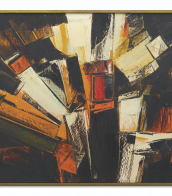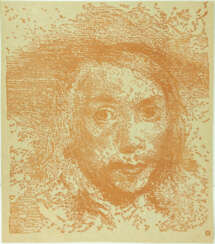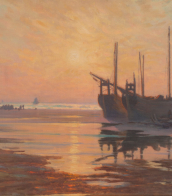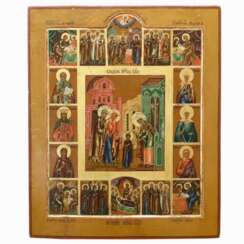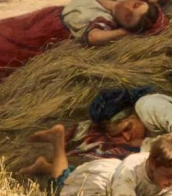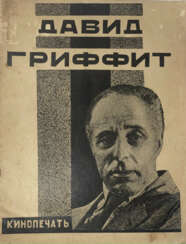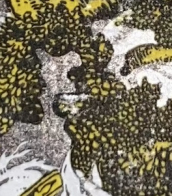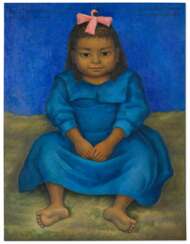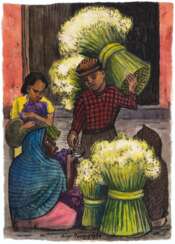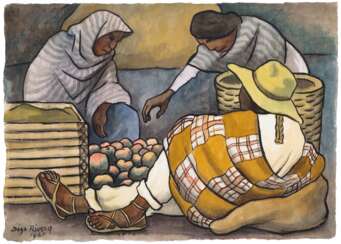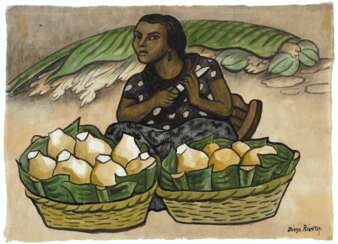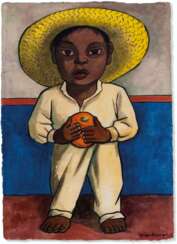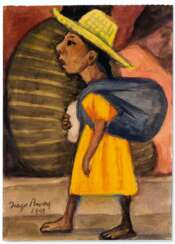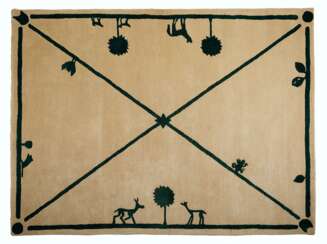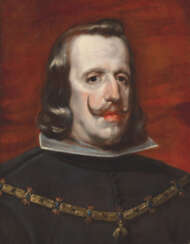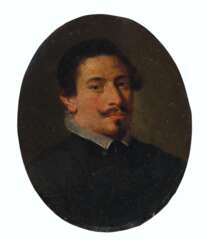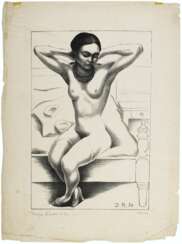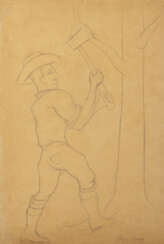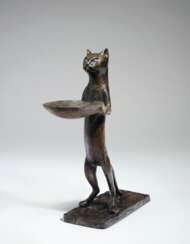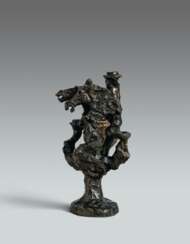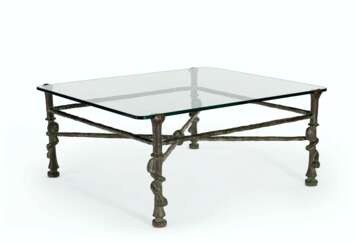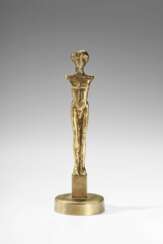диего
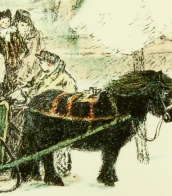

Diego Giacometti was a Swiss sculptor and designer, and the younger brother of the sculptor Alberto Giacometti.
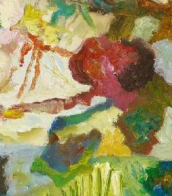
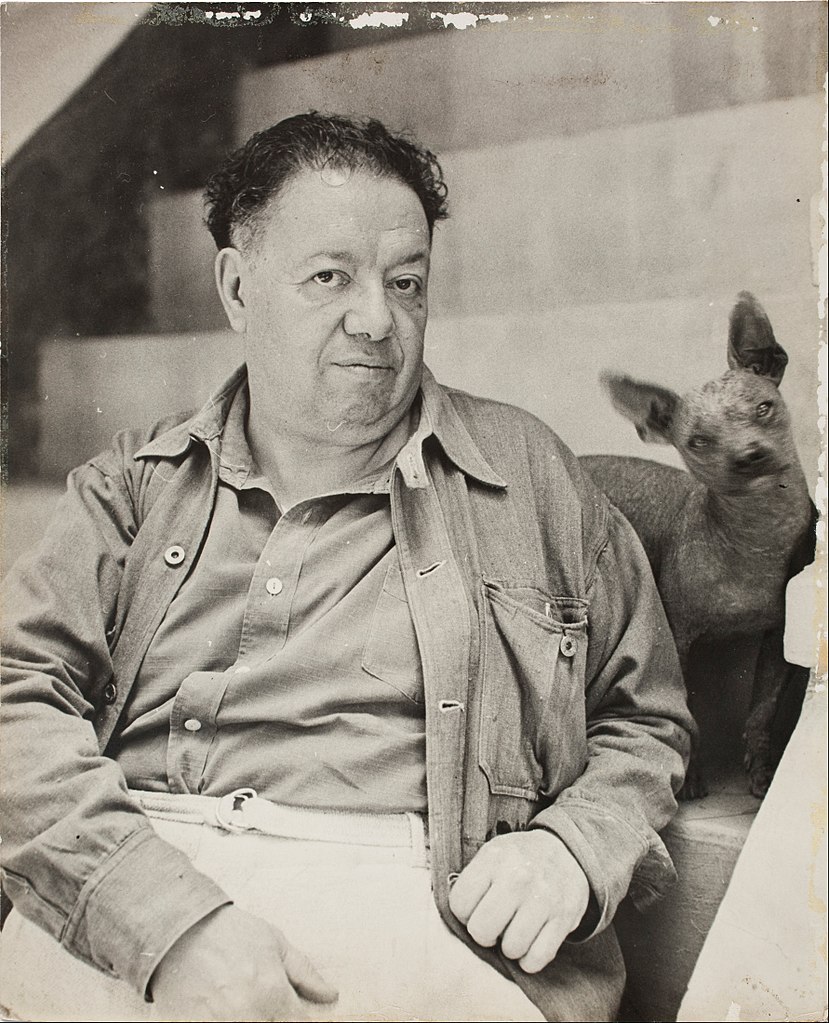
Diego María de la Concepción Juan Nepomuceno Estanislao de la Rivera y Barrientos Acosta y Rodríguez, more commonly known as Diego Rivera, was a prominent Mexican painter celebrated for his critical role in establishing the Mexican mural movement both nationally and internationally. Born on December 8, 1886, in Guanajuato, Mexico, to a well-to-do family, Rivera was a child prodigy in art, encouraged by his parents from a young age after they noticed his penchant for drawing. This early support included installing chalkboards and canvases on the walls of their home to foster his talent.
Rivera's art was not just limited to murals; he was also a key figure in Mexican Cubism and had a rich body of easel paintings. However, his murals, depicting scenes of Mexican society and reflecting his leftist political views, remain his most notable contributions. Some of his most famous works include "Man at the Crossroads," which stirred controversy due to its inclusion of Lenin, leading to its destruction at the Rockefeller Center in New York. Rivera's murals are scattered across Mexico and the United States, serving as historical documents that highlight his technical skill and deep social engagement.
His personal life was as colorful and tumultuous as his art, marked by multiple marriages, including to fellow artist Frida Kahlo. Their relationship was both passionate and stormy, significantly influencing their respective works. Rivera's legacy extends beyond his artwork; he was a mentor to several artists and left an indelible mark on the art world with his contributions to public art and his political activism. His works have been declared national monuments by the Mexican government, underscoring his pivotal role in the country's cultural heritage.
For collectors and experts in art and antiques, Rivera's works offer not only aesthetic beauty but also deep social and historical insights. If you're passionate about adding a piece of this rich cultural heritage to your collection or staying updated on auction events related to Diego Rivera's art, signing up for updates can provide you with timely information on new sales and exhibitions featuring his masterpieces.
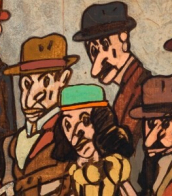

Diego María de la Concepción Juan Nepomuceno Estanislao de la Rivera y Barrientos Acosta y Rodríguez, more commonly known as Diego Rivera, was a prominent Mexican painter celebrated for his critical role in establishing the Mexican mural movement both nationally and internationally. Born on December 8, 1886, in Guanajuato, Mexico, to a well-to-do family, Rivera was a child prodigy in art, encouraged by his parents from a young age after they noticed his penchant for drawing. This early support included installing chalkboards and canvases on the walls of their home to foster his talent.
Rivera's art was not just limited to murals; he was also a key figure in Mexican Cubism and had a rich body of easel paintings. However, his murals, depicting scenes of Mexican society and reflecting his leftist political views, remain his most notable contributions. Some of his most famous works include "Man at the Crossroads," which stirred controversy due to its inclusion of Lenin, leading to its destruction at the Rockefeller Center in New York. Rivera's murals are scattered across Mexico and the United States, serving as historical documents that highlight his technical skill and deep social engagement.
His personal life was as colorful and tumultuous as his art, marked by multiple marriages, including to fellow artist Frida Kahlo. Their relationship was both passionate and stormy, significantly influencing their respective works. Rivera's legacy extends beyond his artwork; he was a mentor to several artists and left an indelible mark on the art world with his contributions to public art and his political activism. His works have been declared national monuments by the Mexican government, underscoring his pivotal role in the country's cultural heritage.
For collectors and experts in art and antiques, Rivera's works offer not only aesthetic beauty but also deep social and historical insights. If you're passionate about adding a piece of this rich cultural heritage to your collection or staying updated on auction events related to Diego Rivera's art, signing up for updates can provide you with timely information on new sales and exhibitions featuring his masterpieces.


Diego María de la Concepción Juan Nepomuceno Estanislao de la Rivera y Barrientos Acosta y Rodríguez, more commonly known as Diego Rivera, was a prominent Mexican painter celebrated for his critical role in establishing the Mexican mural movement both nationally and internationally. Born on December 8, 1886, in Guanajuato, Mexico, to a well-to-do family, Rivera was a child prodigy in art, encouraged by his parents from a young age after they noticed his penchant for drawing. This early support included installing chalkboards and canvases on the walls of their home to foster his talent.
Rivera's art was not just limited to murals; he was also a key figure in Mexican Cubism and had a rich body of easel paintings. However, his murals, depicting scenes of Mexican society and reflecting his leftist political views, remain his most notable contributions. Some of his most famous works include "Man at the Crossroads," which stirred controversy due to its inclusion of Lenin, leading to its destruction at the Rockefeller Center in New York. Rivera's murals are scattered across Mexico and the United States, serving as historical documents that highlight his technical skill and deep social engagement.
His personal life was as colorful and tumultuous as his art, marked by multiple marriages, including to fellow artist Frida Kahlo. Their relationship was both passionate and stormy, significantly influencing their respective works. Rivera's legacy extends beyond his artwork; he was a mentor to several artists and left an indelible mark on the art world with his contributions to public art and his political activism. His works have been declared national monuments by the Mexican government, underscoring his pivotal role in the country's cultural heritage.
For collectors and experts in art and antiques, Rivera's works offer not only aesthetic beauty but also deep social and historical insights. If you're passionate about adding a piece of this rich cultural heritage to your collection or staying updated on auction events related to Diego Rivera's art, signing up for updates can provide you with timely information on new sales and exhibitions featuring his masterpieces.


Diego María de la Concepción Juan Nepomuceno Estanislao de la Rivera y Barrientos Acosta y Rodríguez, more commonly known as Diego Rivera, was a prominent Mexican painter celebrated for his critical role in establishing the Mexican mural movement both nationally and internationally. Born on December 8, 1886, in Guanajuato, Mexico, to a well-to-do family, Rivera was a child prodigy in art, encouraged by his parents from a young age after they noticed his penchant for drawing. This early support included installing chalkboards and canvases on the walls of their home to foster his talent.
Rivera's art was not just limited to murals; he was also a key figure in Mexican Cubism and had a rich body of easel paintings. However, his murals, depicting scenes of Mexican society and reflecting his leftist political views, remain his most notable contributions. Some of his most famous works include "Man at the Crossroads," which stirred controversy due to its inclusion of Lenin, leading to its destruction at the Rockefeller Center in New York. Rivera's murals are scattered across Mexico and the United States, serving as historical documents that highlight his technical skill and deep social engagement.
His personal life was as colorful and tumultuous as his art, marked by multiple marriages, including to fellow artist Frida Kahlo. Their relationship was both passionate and stormy, significantly influencing their respective works. Rivera's legacy extends beyond his artwork; he was a mentor to several artists and left an indelible mark on the art world with his contributions to public art and his political activism. His works have been declared national monuments by the Mexican government, underscoring his pivotal role in the country's cultural heritage.
For collectors and experts in art and antiques, Rivera's works offer not only aesthetic beauty but also deep social and historical insights. If you're passionate about adding a piece of this rich cultural heritage to your collection or staying updated on auction events related to Diego Rivera's art, signing up for updates can provide you with timely information on new sales and exhibitions featuring his masterpieces.


Diego María de la Concepción Juan Nepomuceno Estanislao de la Rivera y Barrientos Acosta y Rodríguez, more commonly known as Diego Rivera, was a prominent Mexican painter celebrated for his critical role in establishing the Mexican mural movement both nationally and internationally. Born on December 8, 1886, in Guanajuato, Mexico, to a well-to-do family, Rivera was a child prodigy in art, encouraged by his parents from a young age after they noticed his penchant for drawing. This early support included installing chalkboards and canvases on the walls of their home to foster his talent.
Rivera's art was not just limited to murals; he was also a key figure in Mexican Cubism and had a rich body of easel paintings. However, his murals, depicting scenes of Mexican society and reflecting his leftist political views, remain his most notable contributions. Some of his most famous works include "Man at the Crossroads," which stirred controversy due to its inclusion of Lenin, leading to its destruction at the Rockefeller Center in New York. Rivera's murals are scattered across Mexico and the United States, serving as historical documents that highlight his technical skill and deep social engagement.
His personal life was as colorful and tumultuous as his art, marked by multiple marriages, including to fellow artist Frida Kahlo. Their relationship was both passionate and stormy, significantly influencing their respective works. Rivera's legacy extends beyond his artwork; he was a mentor to several artists and left an indelible mark on the art world with his contributions to public art and his political activism. His works have been declared national monuments by the Mexican government, underscoring his pivotal role in the country's cultural heritage.
For collectors and experts in art and antiques, Rivera's works offer not only aesthetic beauty but also deep social and historical insights. If you're passionate about adding a piece of this rich cultural heritage to your collection or staying updated on auction events related to Diego Rivera's art, signing up for updates can provide you with timely information on new sales and exhibitions featuring his masterpieces.


Diego María de la Concepción Juan Nepomuceno Estanislao de la Rivera y Barrientos Acosta y Rodríguez, more commonly known as Diego Rivera, was a prominent Mexican painter celebrated for his critical role in establishing the Mexican mural movement both nationally and internationally. Born on December 8, 1886, in Guanajuato, Mexico, to a well-to-do family, Rivera was a child prodigy in art, encouraged by his parents from a young age after they noticed his penchant for drawing. This early support included installing chalkboards and canvases on the walls of their home to foster his talent.
Rivera's art was not just limited to murals; he was also a key figure in Mexican Cubism and had a rich body of easel paintings. However, his murals, depicting scenes of Mexican society and reflecting his leftist political views, remain his most notable contributions. Some of his most famous works include "Man at the Crossroads," which stirred controversy due to its inclusion of Lenin, leading to its destruction at the Rockefeller Center in New York. Rivera's murals are scattered across Mexico and the United States, serving as historical documents that highlight his technical skill and deep social engagement.
His personal life was as colorful and tumultuous as his art, marked by multiple marriages, including to fellow artist Frida Kahlo. Their relationship was both passionate and stormy, significantly influencing their respective works. Rivera's legacy extends beyond his artwork; he was a mentor to several artists and left an indelible mark on the art world with his contributions to public art and his political activism. His works have been declared national monuments by the Mexican government, underscoring his pivotal role in the country's cultural heritage.
For collectors and experts in art and antiques, Rivera's works offer not only aesthetic beauty but also deep social and historical insights. If you're passionate about adding a piece of this rich cultural heritage to your collection or staying updated on auction events related to Diego Rivera's art, signing up for updates can provide you with timely information on new sales and exhibitions featuring his masterpieces.


Diego Giacometti was a Swiss sculptor and designer, and the younger brother of the sculptor Alberto Giacometti.
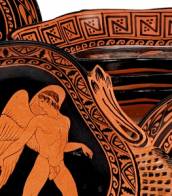
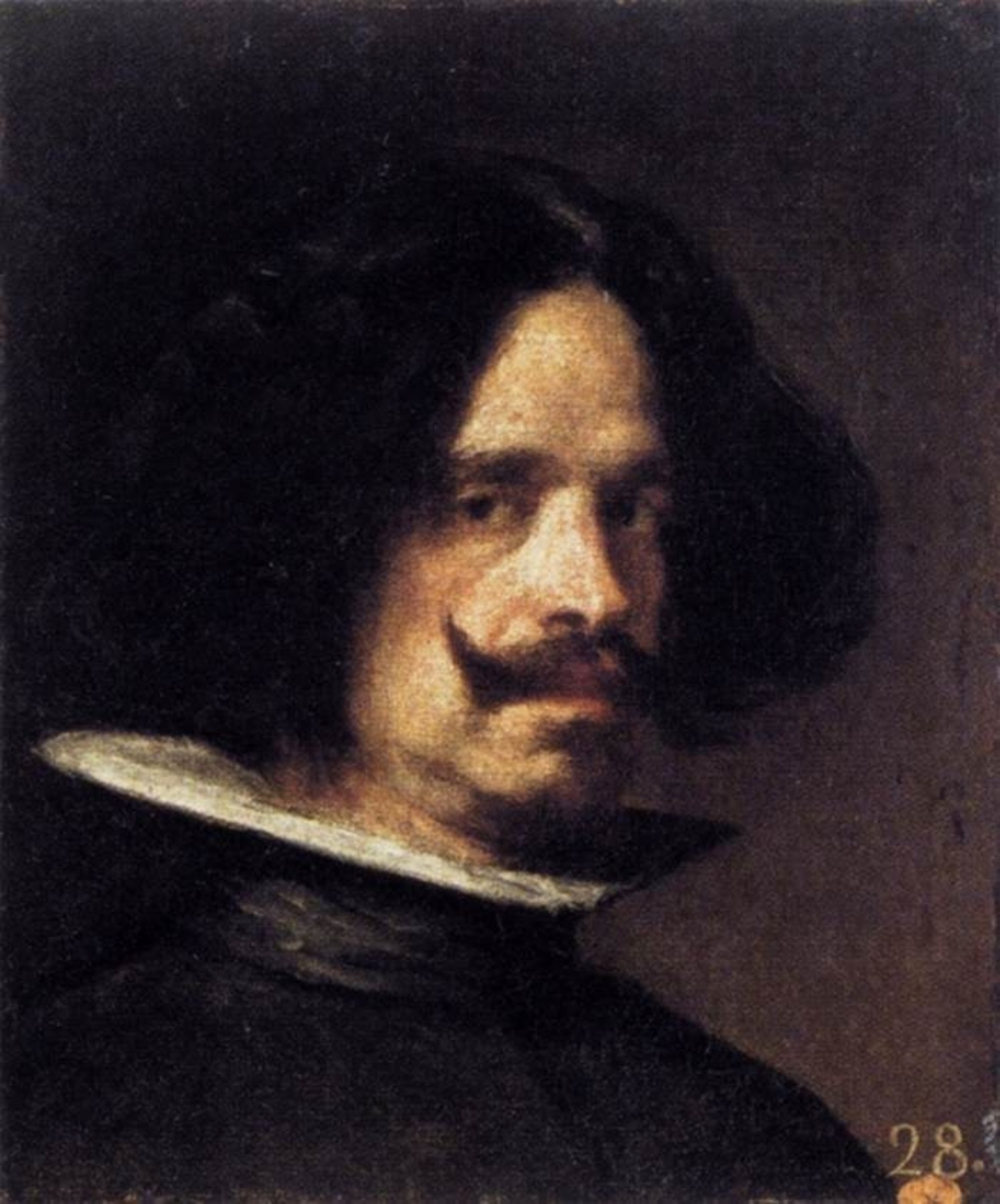
Diego Velázquez, a seminal figure in the history of Western art, was a Spanish painter whose work left an indelible mark on the canvas of art history. Born in Seville, Spain, in 1599, Velázquez's early life was steeped in the rich cultural heritage of his homeland, which would later profoundly influence his artistic direction. His baptism took place in the church of St. Peter in Seville, hinting at a life that would be closely intertwined with the spiritual and cultural fabric of Spain.
Velázquez's journey into art began under the tutelage of Francisco Pacheco, a renowned artist in Seville, where he honed his skills and developed a unique style that married realism with a keen observation of human nature. This formative period was crucial, setting the stage for Velázquez to become the leading artist in the court of King Philip IV, where he produced portraits that captured the essence of the Spanish royal family with unparalleled depth and sensitivity. His work during this period, including iconic pieces like "Las Meninas" and "The Surrender of Breda," showcased not only his technical prowess but also his ability to convey complex narratives and emotions through his paintings.
Velázquez's influence extended far beyond his lifetime, inspiring future generations of artists across various movements. His approach to realism and use of light and shadow would later become a cornerstone for realist and impressionist painters in the 19th century, including Édouard Manet. Moreover, 20th-century icons like Pablo Picasso, Salvador Dalí, and Francis Bacon paid homage to Velázquez, reinterpreting his works and celebrating his enduring legacy in the canon of art history.
The breadth of Velázquez's work is best appreciated in institutions like the Museo del Prado in Madrid, which houses an extensive collection of his paintings. These pieces not only offer a glimpse into the artist's mastery over his medium but also reflect the cultural and historical zeitgeist of 17th-century Spain. Velázquez's ability to capture the human condition, coupled with his innovative techniques, cemented his position as a pivotal figure in the Baroque period and a master of the Spanish Golden Age of painting.
For collectors and experts in art and antiques, Velázquez's oeuvre represents a pinnacle of artistic achievement, offering insights into the evolution of painting and the enduring power of visual storytelling. His works continue to inspire and captivate audiences, underscoring the timeless nature of his artistry.
To stay informed on new discoveries, product sales, and auction events related to Diego Velázquez, signing up for updates is highly recommended. This ensures that enthusiasts and collectors alike remain connected to the vibrant world of Velázquez and the rich heritage of Spanish art.
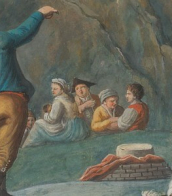

Diego Giacometti was a Swiss sculptor and designer, and the younger brother of the sculptor Alberto Giacometti.
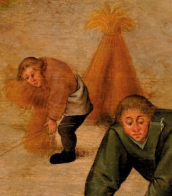

Diego Velázquez, a seminal figure in the history of Western art, was a Spanish painter whose work left an indelible mark on the canvas of art history. Born in Seville, Spain, in 1599, Velázquez's early life was steeped in the rich cultural heritage of his homeland, which would later profoundly influence his artistic direction. His baptism took place in the church of St. Peter in Seville, hinting at a life that would be closely intertwined with the spiritual and cultural fabric of Spain.
Velázquez's journey into art began under the tutelage of Francisco Pacheco, a renowned artist in Seville, where he honed his skills and developed a unique style that married realism with a keen observation of human nature. This formative period was crucial, setting the stage for Velázquez to become the leading artist in the court of King Philip IV, where he produced portraits that captured the essence of the Spanish royal family with unparalleled depth and sensitivity. His work during this period, including iconic pieces like "Las Meninas" and "The Surrender of Breda," showcased not only his technical prowess but also his ability to convey complex narratives and emotions through his paintings.
Velázquez's influence extended far beyond his lifetime, inspiring future generations of artists across various movements. His approach to realism and use of light and shadow would later become a cornerstone for realist and impressionist painters in the 19th century, including Édouard Manet. Moreover, 20th-century icons like Pablo Picasso, Salvador Dalí, and Francis Bacon paid homage to Velázquez, reinterpreting his works and celebrating his enduring legacy in the canon of art history.
The breadth of Velázquez's work is best appreciated in institutions like the Museo del Prado in Madrid, which houses an extensive collection of his paintings. These pieces not only offer a glimpse into the artist's mastery over his medium but also reflect the cultural and historical zeitgeist of 17th-century Spain. Velázquez's ability to capture the human condition, coupled with his innovative techniques, cemented his position as a pivotal figure in the Baroque period and a master of the Spanish Golden Age of painting.
For collectors and experts in art and antiques, Velázquez's oeuvre represents a pinnacle of artistic achievement, offering insights into the evolution of painting and the enduring power of visual storytelling. His works continue to inspire and captivate audiences, underscoring the timeless nature of his artistry.
To stay informed on new discoveries, product sales, and auction events related to Diego Velázquez, signing up for updates is highly recommended. This ensures that enthusiasts and collectors alike remain connected to the vibrant world of Velázquez and the rich heritage of Spanish art.
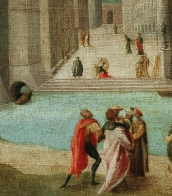

Diego María de la Concepción Juan Nepomuceno Estanislao de la Rivera y Barrientos Acosta y Rodríguez, more commonly known as Diego Rivera, was a prominent Mexican painter celebrated for his critical role in establishing the Mexican mural movement both nationally and internationally. Born on December 8, 1886, in Guanajuato, Mexico, to a well-to-do family, Rivera was a child prodigy in art, encouraged by his parents from a young age after they noticed his penchant for drawing. This early support included installing chalkboards and canvases on the walls of their home to foster his talent.
Rivera's art was not just limited to murals; he was also a key figure in Mexican Cubism and had a rich body of easel paintings. However, his murals, depicting scenes of Mexican society and reflecting his leftist political views, remain his most notable contributions. Some of his most famous works include "Man at the Crossroads," which stirred controversy due to its inclusion of Lenin, leading to its destruction at the Rockefeller Center in New York. Rivera's murals are scattered across Mexico and the United States, serving as historical documents that highlight his technical skill and deep social engagement.
His personal life was as colorful and tumultuous as his art, marked by multiple marriages, including to fellow artist Frida Kahlo. Their relationship was both passionate and stormy, significantly influencing their respective works. Rivera's legacy extends beyond his artwork; he was a mentor to several artists and left an indelible mark on the art world with his contributions to public art and his political activism. His works have been declared national monuments by the Mexican government, underscoring his pivotal role in the country's cultural heritage.
For collectors and experts in art and antiques, Rivera's works offer not only aesthetic beauty but also deep social and historical insights. If you're passionate about adding a piece of this rich cultural heritage to your collection or staying updated on auction events related to Diego Rivera's art, signing up for updates can provide you with timely information on new sales and exhibitions featuring his masterpieces.
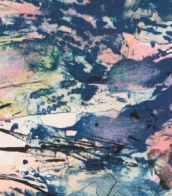

Diego María de la Concepción Juan Nepomuceno Estanislao de la Rivera y Barrientos Acosta y Rodríguez, more commonly known as Diego Rivera, was a prominent Mexican painter celebrated for his critical role in establishing the Mexican mural movement both nationally and internationally. Born on December 8, 1886, in Guanajuato, Mexico, to a well-to-do family, Rivera was a child prodigy in art, encouraged by his parents from a young age after they noticed his penchant for drawing. This early support included installing chalkboards and canvases on the walls of their home to foster his talent.
Rivera's art was not just limited to murals; he was also a key figure in Mexican Cubism and had a rich body of easel paintings. However, his murals, depicting scenes of Mexican society and reflecting his leftist political views, remain his most notable contributions. Some of his most famous works include "Man at the Crossroads," which stirred controversy due to its inclusion of Lenin, leading to its destruction at the Rockefeller Center in New York. Rivera's murals are scattered across Mexico and the United States, serving as historical documents that highlight his technical skill and deep social engagement.
His personal life was as colorful and tumultuous as his art, marked by multiple marriages, including to fellow artist Frida Kahlo. Their relationship was both passionate and stormy, significantly influencing their respective works. Rivera's legacy extends beyond his artwork; he was a mentor to several artists and left an indelible mark on the art world with his contributions to public art and his political activism. His works have been declared national monuments by the Mexican government, underscoring his pivotal role in the country's cultural heritage.
For collectors and experts in art and antiques, Rivera's works offer not only aesthetic beauty but also deep social and historical insights. If you're passionate about adding a piece of this rich cultural heritage to your collection or staying updated on auction events related to Diego Rivera's art, signing up for updates can provide you with timely information on new sales and exhibitions featuring his masterpieces.


Diego Velázquez, a seminal figure in the history of Western art, was a Spanish painter whose work left an indelible mark on the canvas of art history. Born in Seville, Spain, in 1599, Velázquez's early life was steeped in the rich cultural heritage of his homeland, which would later profoundly influence his artistic direction. His baptism took place in the church of St. Peter in Seville, hinting at a life that would be closely intertwined with the spiritual and cultural fabric of Spain.
Velázquez's journey into art began under the tutelage of Francisco Pacheco, a renowned artist in Seville, where he honed his skills and developed a unique style that married realism with a keen observation of human nature. This formative period was crucial, setting the stage for Velázquez to become the leading artist in the court of King Philip IV, where he produced portraits that captured the essence of the Spanish royal family with unparalleled depth and sensitivity. His work during this period, including iconic pieces like "Las Meninas" and "The Surrender of Breda," showcased not only his technical prowess but also his ability to convey complex narratives and emotions through his paintings.
Velázquez's influence extended far beyond his lifetime, inspiring future generations of artists across various movements. His approach to realism and use of light and shadow would later become a cornerstone for realist and impressionist painters in the 19th century, including Édouard Manet. Moreover, 20th-century icons like Pablo Picasso, Salvador Dalí, and Francis Bacon paid homage to Velázquez, reinterpreting his works and celebrating his enduring legacy in the canon of art history.
The breadth of Velázquez's work is best appreciated in institutions like the Museo del Prado in Madrid, which houses an extensive collection of his paintings. These pieces not only offer a glimpse into the artist's mastery over his medium but also reflect the cultural and historical zeitgeist of 17th-century Spain. Velázquez's ability to capture the human condition, coupled with his innovative techniques, cemented his position as a pivotal figure in the Baroque period and a master of the Spanish Golden Age of painting.
For collectors and experts in art and antiques, Velázquez's oeuvre represents a pinnacle of artistic achievement, offering insights into the evolution of painting and the enduring power of visual storytelling. His works continue to inspire and captivate audiences, underscoring the timeless nature of his artistry.
To stay informed on new discoveries, product sales, and auction events related to Diego Velázquez, signing up for updates is highly recommended. This ensures that enthusiasts and collectors alike remain connected to the vibrant world of Velázquez and the rich heritage of Spanish art.
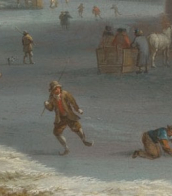

Diego Giacometti was a Swiss sculptor and designer, and the younger brother of the sculptor Alberto Giacometti.
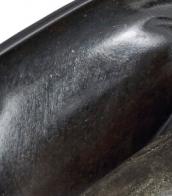

Diego Giacometti was a Swiss sculptor and designer, and the younger brother of the sculptor Alberto Giacometti.


Diego Giacometti was a Swiss sculptor and designer, and the younger brother of the sculptor Alberto Giacometti.
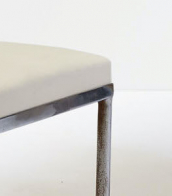

Diego Giacometti was a Swiss sculptor and designer, and the younger brother of the sculptor Alberto Giacometti.


Diego Giacometti was a Swiss sculptor and designer, and the younger brother of the sculptor Alberto Giacometti.
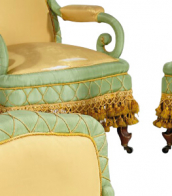

Diego Velázquez, a seminal figure in the history of Western art, was a Spanish painter whose work left an indelible mark on the canvas of art history. Born in Seville, Spain, in 1599, Velázquez's early life was steeped in the rich cultural heritage of his homeland, which would later profoundly influence his artistic direction. His baptism took place in the church of St. Peter in Seville, hinting at a life that would be closely intertwined with the spiritual and cultural fabric of Spain.
Velázquez's journey into art began under the tutelage of Francisco Pacheco, a renowned artist in Seville, where he honed his skills and developed a unique style that married realism with a keen observation of human nature. This formative period was crucial, setting the stage for Velázquez to become the leading artist in the court of King Philip IV, where he produced portraits that captured the essence of the Spanish royal family with unparalleled depth and sensitivity. His work during this period, including iconic pieces like "Las Meninas" and "The Surrender of Breda," showcased not only his technical prowess but also his ability to convey complex narratives and emotions through his paintings.
Velázquez's influence extended far beyond his lifetime, inspiring future generations of artists across various movements. His approach to realism and use of light and shadow would later become a cornerstone for realist and impressionist painters in the 19th century, including Édouard Manet. Moreover, 20th-century icons like Pablo Picasso, Salvador Dalí, and Francis Bacon paid homage to Velázquez, reinterpreting his works and celebrating his enduring legacy in the canon of art history.
The breadth of Velázquez's work is best appreciated in institutions like the Museo del Prado in Madrid, which houses an extensive collection of his paintings. These pieces not only offer a glimpse into the artist's mastery over his medium but also reflect the cultural and historical zeitgeist of 17th-century Spain. Velázquez's ability to capture the human condition, coupled with his innovative techniques, cemented his position as a pivotal figure in the Baroque period and a master of the Spanish Golden Age of painting.
For collectors and experts in art and antiques, Velázquez's oeuvre represents a pinnacle of artistic achievement, offering insights into the evolution of painting and the enduring power of visual storytelling. His works continue to inspire and captivate audiences, underscoring the timeless nature of his artistry.
To stay informed on new discoveries, product sales, and auction events related to Diego Velázquez, signing up for updates is highly recommended. This ensures that enthusiasts and collectors alike remain connected to the vibrant world of Velázquez and the rich heritage of Spanish art.
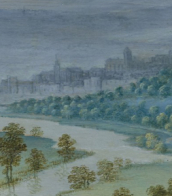

Diego Giacometti was a Swiss sculptor and designer, and the younger brother of the sculptor Alberto Giacometti.
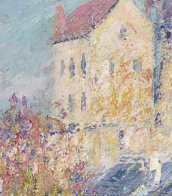

Diego María de la Concepción Juan Nepomuceno Estanislao de la Rivera y Barrientos Acosta y Rodríguez, more commonly known as Diego Rivera, was a prominent Mexican painter celebrated for his critical role in establishing the Mexican mural movement both nationally and internationally. Born on December 8, 1886, in Guanajuato, Mexico, to a well-to-do family, Rivera was a child prodigy in art, encouraged by his parents from a young age after they noticed his penchant for drawing. This early support included installing chalkboards and canvases on the walls of their home to foster his talent.
Rivera's art was not just limited to murals; he was also a key figure in Mexican Cubism and had a rich body of easel paintings. However, his murals, depicting scenes of Mexican society and reflecting his leftist political views, remain his most notable contributions. Some of his most famous works include "Man at the Crossroads," which stirred controversy due to its inclusion of Lenin, leading to its destruction at the Rockefeller Center in New York. Rivera's murals are scattered across Mexico and the United States, serving as historical documents that highlight his technical skill and deep social engagement.
His personal life was as colorful and tumultuous as his art, marked by multiple marriages, including to fellow artist Frida Kahlo. Their relationship was both passionate and stormy, significantly influencing their respective works. Rivera's legacy extends beyond his artwork; he was a mentor to several artists and left an indelible mark on the art world with his contributions to public art and his political activism. His works have been declared national monuments by the Mexican government, underscoring his pivotal role in the country's cultural heritage.
For collectors and experts in art and antiques, Rivera's works offer not only aesthetic beauty but also deep social and historical insights. If you're passionate about adding a piece of this rich cultural heritage to your collection or staying updated on auction events related to Diego Rivera's art, signing up for updates can provide you with timely information on new sales and exhibitions featuring his masterpieces.
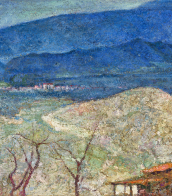

Diego María de la Concepción Juan Nepomuceno Estanislao de la Rivera y Barrientos Acosta y Rodríguez, more commonly known as Diego Rivera, was a prominent Mexican painter celebrated for his critical role in establishing the Mexican mural movement both nationally and internationally. Born on December 8, 1886, in Guanajuato, Mexico, to a well-to-do family, Rivera was a child prodigy in art, encouraged by his parents from a young age after they noticed his penchant for drawing. This early support included installing chalkboards and canvases on the walls of their home to foster his talent.
Rivera's art was not just limited to murals; he was also a key figure in Mexican Cubism and had a rich body of easel paintings. However, his murals, depicting scenes of Mexican society and reflecting his leftist political views, remain his most notable contributions. Some of his most famous works include "Man at the Crossroads," which stirred controversy due to its inclusion of Lenin, leading to its destruction at the Rockefeller Center in New York. Rivera's murals are scattered across Mexico and the United States, serving as historical documents that highlight his technical skill and deep social engagement.
His personal life was as colorful and tumultuous as his art, marked by multiple marriages, including to fellow artist Frida Kahlo. Their relationship was both passionate and stormy, significantly influencing their respective works. Rivera's legacy extends beyond his artwork; he was a mentor to several artists and left an indelible mark on the art world with his contributions to public art and his political activism. His works have been declared national monuments by the Mexican government, underscoring his pivotal role in the country's cultural heritage.
For collectors and experts in art and antiques, Rivera's works offer not only aesthetic beauty but also deep social and historical insights. If you're passionate about adding a piece of this rich cultural heritage to your collection or staying updated on auction events related to Diego Rivera's art, signing up for updates can provide you with timely information on new sales and exhibitions featuring his masterpieces.


Diego Giacometti was a Swiss sculptor and designer, and the younger brother of the sculptor Alberto Giacometti.


Diego Giacometti was a Swiss sculptor and designer, and the younger brother of the sculptor Alberto Giacometti.
